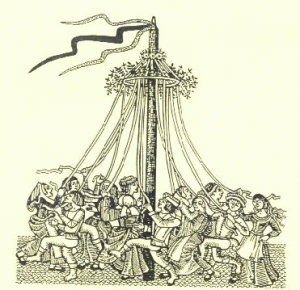This past Spring, a friend of mine, Judy Z, gifted me with a piece from her David Winter Cottages collection. She gave me Benbow’s Farmhouse and described it as having a very interesting connection to the Mormon church.
Researching further, I found that Benbow’s Farmhouse by David Winter Cottages was made to commemorate the 150th anniversary of the arrival in 1837, to Britain, of the first missionaries from The Church of Jesus Christ of Latter-day Saints. In 1840, Apostle Wilford Woodruff of the Church of Jesus Christ of Latter-Day Saints (Mormon or LDS) stayed with John and Jane Benbow at Hill Farm (Benbow’s Farmhouse) in Castle Frome, Herefordshire, and baptised many converts to the new religion in the farm pond. John Benbow himself had became a member of the Church and was responsible for the first printing of the Book of Mormon in Great Britain.
The image, David Winter – Benbow’s Farmhouse, was originally uploaded by Edna Barney. It is posted here from Barneykin’s  account.
account.
















